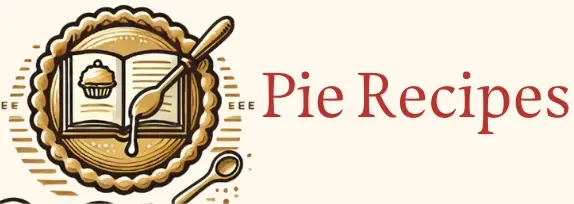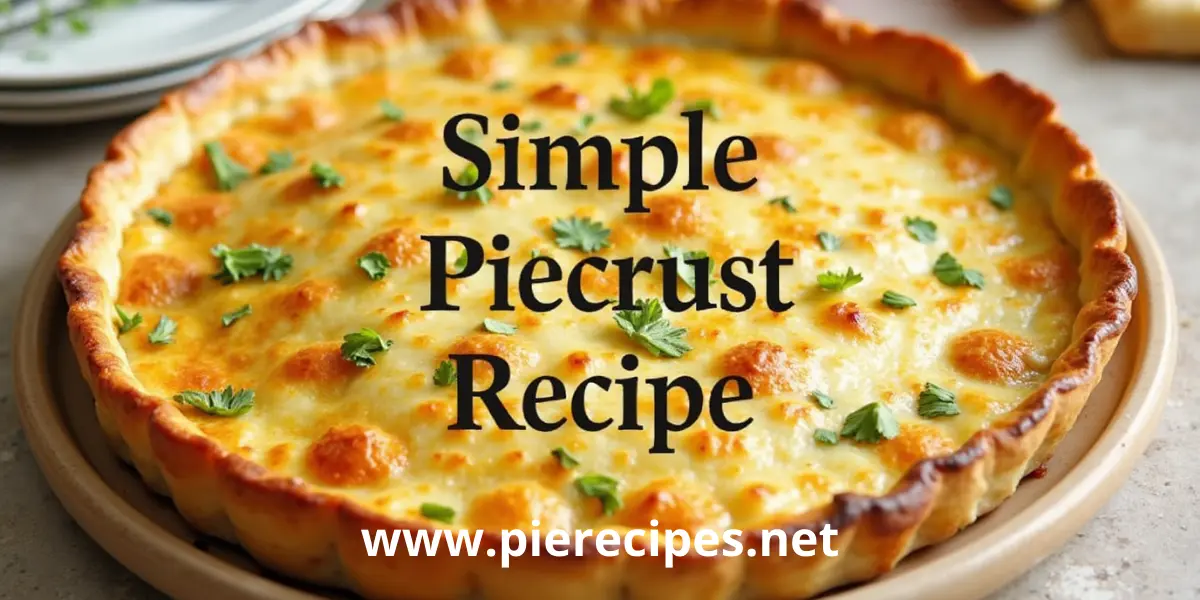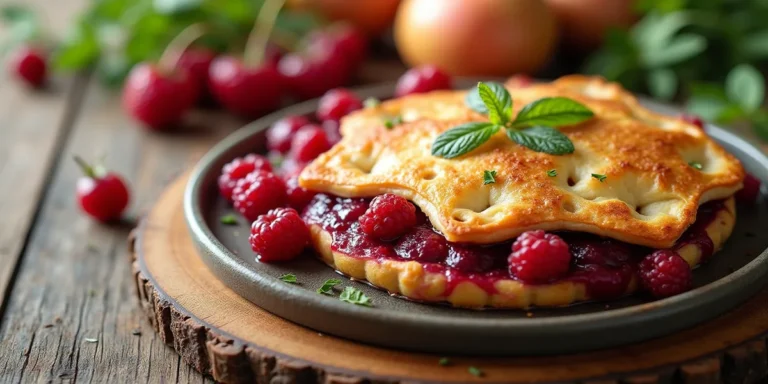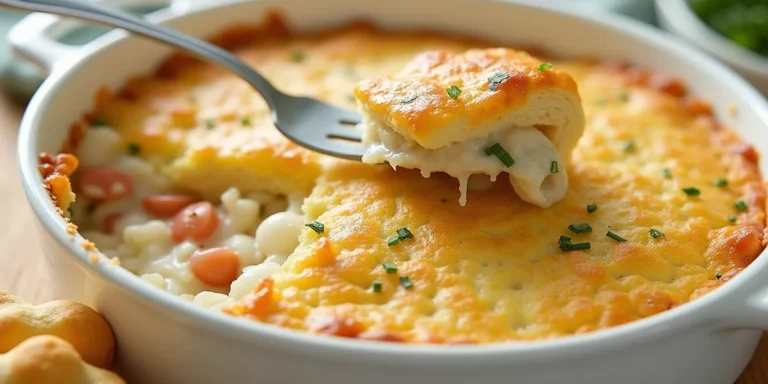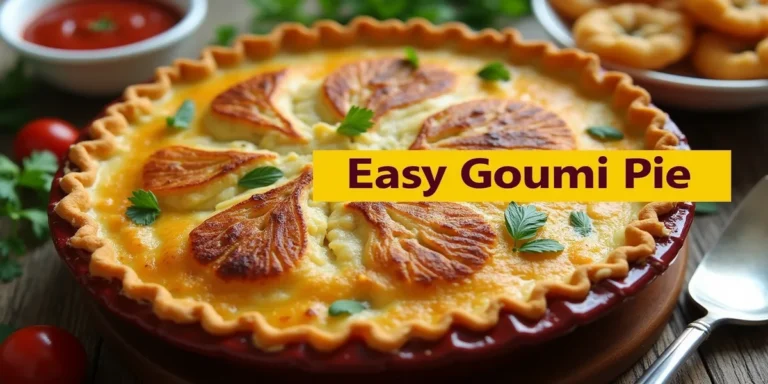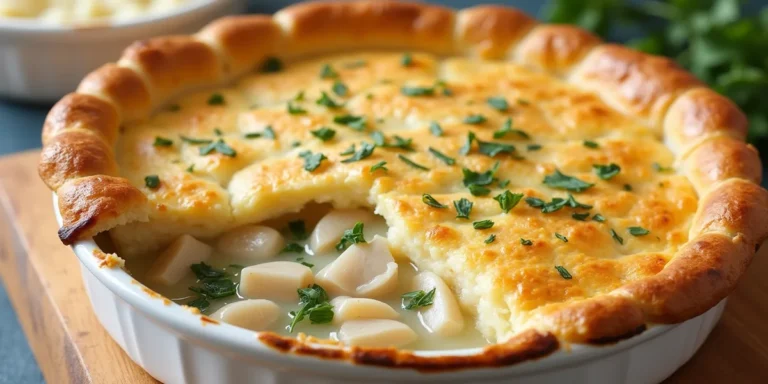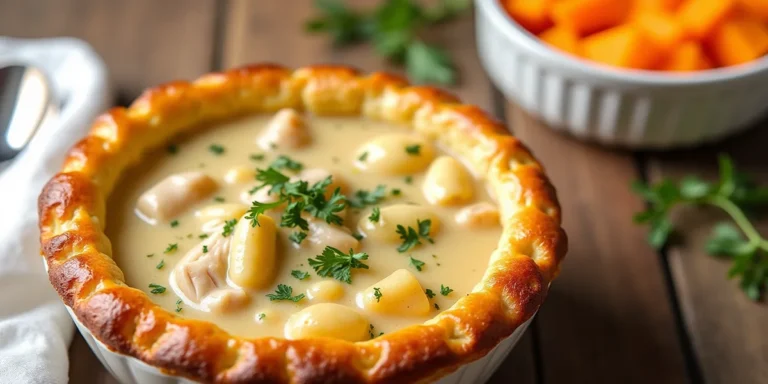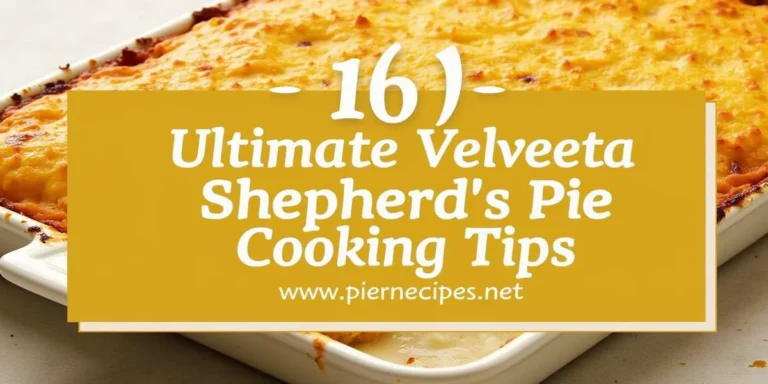Simple Piecrust Recipe for Beginners
Table of Contents
Making a delicious pie starts with the crust. You can make a tasty pie crust with shortening, a better choice than butter. Crisco, a shortening, makes the crust flaky and easy to make.
Many bakers choose Crisco for their pie crusts. It’s because shortening makes the crust tender and flaky.

Introduction to Pie Crust Making
Starting to make the perfect pie crust is exciting. You’ll learn how to make a flaky crust with shortening. You’ll find out why the right ingredients and techniques are key.
Key Takeaways
- You can make a delicious pie crust with shortening, such as Crisco.
- A pie crust using Crisco is a great alternative to traditional butter-based crusts.
- The use of shortening in pie crusts can result in a flaky and tender crust.
- Understanding the basics of pie crust making is essential for achieving the perfect crust.
- A pie crust with shortening is a popular choice among bakers, specially beginners.
- Using the right ingredients and techniques is crucial for making a delicious pie crust.
Why Choose a Pie Crust with Shortening
Choosing the right pie crust can make a big difference in taste. A piecrust made with shortening is flaky and tender. Many recipes for the best pie shell use shortening, and it’s a great choice for many fillings.
Shortening makes the crust flaky. Shortening outperforms butter in the kitchen because it stays solid at higher temperatures.This makes the crust tender and flaky. It also adds flavor, enhancing the pie’s taste.
Benefits of Using Shortening vs Butter
Shortening is cheaper than butter and lasts longer. It’s perfect for those watching their budget. It’s also great for keeping the piecrust fresh for longer.
Science Behind Flaky Crusts
The secret to a flaky crust is how ingredients mix. Shortening creates a layer of fat in the crust. This makes it flaky and tender. Using a reliable recipe is key to success.
| Ingredient | Benefits |
|---|---|
| Shortening | Helps create a flaky texture, adds flavor |
| Butter | Adds flavor, can create a tender crust |
Temperature Considerations
Temperature is crucial when making a piecrust. It affects how ingredients mix, impacting the crust’s texture. Using the right temperature and a trusted recipe ensures a delicious crust.
Essential Ingredients for Your Perfect Pie Shell
To make a tasty and flaky pie crust, you need top-notch ingredients. A classic pie crust recipe with shorten includes all-purpose flour, salt, and shortening. Choose flour with low protein for a tender crust.
Here are the key ingredients you’ll need:
- 2 cups of all-purpose flour
- 1 teaspoon of salt
- 1/2 cup of shortening
You can add sugar or seasonings to yourpie crust recipe with shorten for extra taste.
Accurate measuring is key for a perfect pie shell. Use a digital scale or measuring cups. You can also mix shortening and butter for an extra-flaky crust.
Keep your ingredients cold for a flaky crust. Try different flours like whole wheat or pastry flour for unique flavors and textures.
| Ingredient | Quantity | Importance |
|---|---|---|
| All-purpose flour | 2 cups | High |
| Salt | 1 teaspoon | Medium |
| Shortening | 1/2 cup | High |
Follow these tips and use a classic pie crust recipe with shorten to make a delicious pie crust that will wow everyone.
Must-Have Tools and Equipment
To make a perfect piecrust, you need the right tools. A mixing bowl, rolling pin, and pastry blender are basic. They help you start making a pie crust using crisco.
A food processor can also be very helpful. It makes mixing and blending easier, even with cold butter or crisco. Don’t forget a pastry brush for a golden brown finish.
Basic Kitchen Tools Needed
- Mixing bowl
- Rolling pin
- Pastry blender
Optional but Helpful Equipment
- Food processor
- Pastry brush
Measuring Tools for Accuracy
Measuring tools are key for a perfect piecrust. A digital scale or measuring cups are best. They help you measure ingredients right. With the right tools, you’ll make a delicious homemade piecrust.
| Tool | Description |
|---|---|
| Mixing bowl | Used for mixing and blending ingredients |
| Rolling pin | Used for rolling out the piecrust |
| Pastry blender | Used for blending cold butter or crisco into flour |
Step-by-Step Mixing Method
To get the perfect pie shell, follow a step-by-step mixing method. Begin by mixing dry ingredients like flour and salt in a big bowl. Then, add shortening and blend it into the flour until it looks like coarse crumbs.
After that, slowly add cold water while stirring with a fork. Keep stirring until it forms a shaggy dough. Stir the dough just enough to bring it together—overdoing it can rob your crust of its tenderness.
Instead, aim for a flaky and tender crust.
Here are some tips for mixing your pie crust dough:
- Use cold ingredients to help the dough come together
- Gentle mixing is the key; too much handling can toughen your crust and compromise its flakiness.
- Use a light touch when stirring the dough to prevent developing the gluten
By following these steps and tips, you’ll make a delicious and flaky pie crust. Remember to keep your ingredients cold and your mixing gentle. This will help you achieve the best pie shell recipe.
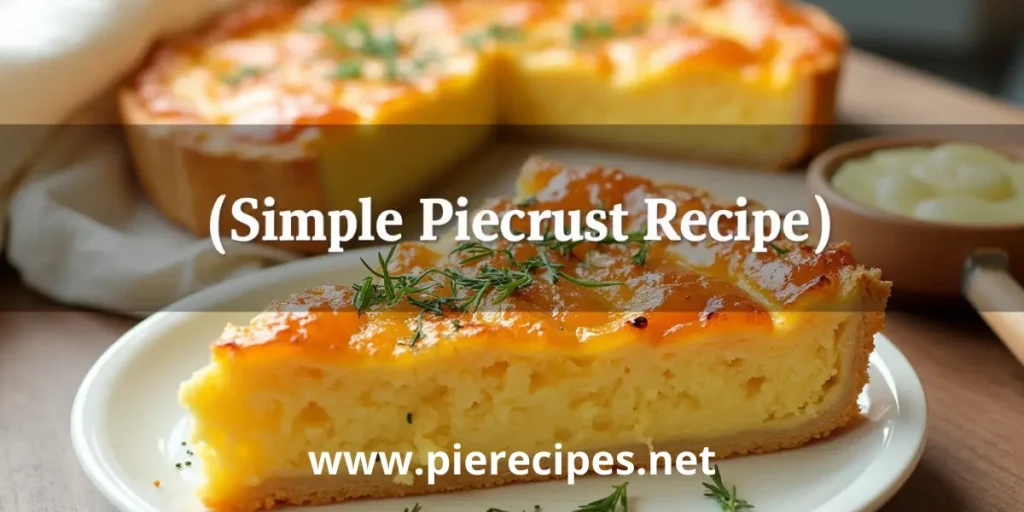
Rolling and Shaping Techniques
To make a stunning pie crust with shortening, you must learn how to roll and shape it. You’ll need to roll the dough to the perfect thickness, place it in a pie dish, and crimp the edges. A beautifully crafted piecrust can turn any pie into a masterpiece.
When rolling out the dough, use a light touch and even pressure. This ensures the crust is not tough or dense. You can shape the dough into a circle or rectangle, depending on your pie’s type.
- Dust your workspace with flour to keep the dough smooth and manageable as you roll.
- Aim for a uniform thickness of about 1/8 inch to ensure even baking and the perfect crust texture.
- Use a gentle touch to transfer the dough to the pie dish
- Pinch and twist the edges of your crust to give it an elegant, bakery-worthy finish
By following these tips and practicing, you’ll make a beautiful pie crust with shortening. It will impress everyone. Be patient and gentle with the dough. Don’t hesitate to try different shapes and designs for a unique piecrust.
Pre-Baking and Blind Baking Tips
When making a pie crust using crisco, pre-baking and blind baking are key. They help prevent the crust from getting soggy. Blind baking makes sure the crust cooks evenly.For pre-baking, layer the crust with parchment and add pie weights or beans to maintain its shape.
To make your pie crust even better, try these tips:
- Use pie weights to prevent the crust from bubbling up during baking.
- Chill the crust before baking to help it hold its shape.
- Bake the crust at the right temperature to achieve a golden brown color.
By following these tips, you’ll make a delicious pie crust using crisco that will wow everyone.High-quality ingredients paired with a little patience are the foundation of a show-stopping pie crust. With practice, you’ll master the best pie shell recipe for any event.
Common Mistakes to Avoid
When making a pie crust with shortening, it’s key to know common mistakes. These mistakes can ruin the texture and taste of your pie. Temperature is a big factor to watch, as it affects the crust’s consistency.
Don’t overwork the dough. This can make it tough.Combine the components lightly, stopping as soon as the dough holds together in a rough ball.
If your pie crust isn’t right, try changing the temperature or shortening amount. This will help you get a flaky, tender crust.
Temperature-Related Issues
Temperature is crucial for a good pie crust with shortening. If the dough is too warm, it’s hard to work with. This can make the crust shrink or become misshapen.
If the dough is too cold, it won’t roll out evenly. This can cause an uneven or cracked crust.
Texture Problems and Solutions
A common problem is a dense or tough pie crust. To fix this, use the right amount of shortening and keep the dough cold. If your pie crust is not right, add more shortening or adjust the mixing time.
This will help you get a tender, flaky crust. By avoiding these mistakes, you can make a delicious pie crust with shortening. Keep your ingredients cold, mix just until combined, and avoid overworking. With practice, you’ll make perfect pie crusts using your favorite recipe.
Variations and Adaptations
Exploring piecrust options is exciting. You can try various fillings and toppings to make unique pies. For instance, use a pie crust using crisco and add your favorite fruits, nuts, or chocolates for a special dessert.
To meet different dietary needs, you can modify the recipe.Kickstart your pie-making journey with these creative tweaks and variations:
- Make a piecrust safe for those with gluten intolerance by using a gluten-free flour blend.
- For vegans, swap traditional butter with coconut oil or almond milk in a pie crust using crisco.
- Try different sugars like honey or maple syrup for a unique taste.
Trying out different variations and adaptations can lead to many tasty pies. Whether you’re an experienced baker or just starting, the secret to a great piecrust is to enjoy the process and be creative.
Conclusion: Mastering Your Homemade Pie Crust
Making a tasty homemade pie crust needs practice and patience. The best pie shell recipe is the one that suits you and your baking style. With the tips and techniques shared, you’re ready to make a flaky pie crust that will wow everyone.
Don’t worry if your first pies don’t come out perfectly. With every pie you bake, your skills will sharpen, and your confidence will soar.
Keep trying different methods, tweaking ingredients, and improving your rolling and crimping skills. Each pie crust you make will make you more confident and skilled.
The joy of baking lies in the journey—relax, have fun, and savor the experience. Making homemade pies is a rewarding and fulfilling experience. With patience and a bit of trial and error, you’ll soon be making pie crusts that are as good as those from a bakery.
FAQ
What are the benefits of using shortening in a pie crust?
Shortening makes pie crusts flakier and more tender than butter. It has a higher melting point, keeping the crust’s shape while baking. This results in a more even texture.
What are the essential ingredients for a perfect pie shell?
For a perfect pie shell, you need quality flour, salt, and shortening. Cold water is also key to bringing the dough together. Measuring ingredients accurately and mixing right is crucial for the perfect texture.
What tools and equipment are needed to make a pie crust?
You’ll need a mixing bowl, pastry blender or fork, rolling pin, and a pie dish. Tools like a food processor, pastry brush, and measuring tools are optional but helpful. The right tools make making a pie crust easier.
How do I properly roll and shape the pie crust with Shortening?
To roll and shape the pie crust right, use the correct technique. Roll the dough evenly to the right thickness and transfer it to the pie dish carefully. Crimping and adding decorative edges can also enhance your pie crust.
What common mistakes should I avoid when making a pie crust?
Avoid common mistakes like overworking the dough or not keeping ingredients cold. Texture issues like a dense or flaky crust can be fixed by following the right mixing and handling techniques. Cracking or breaking the crust can also be fixed with the right approach.
